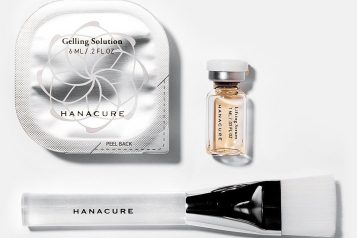According to the American Society of Plastic Surgery (ASPS), breast augmentation with implants was the most popular cosmetic surgery in 2017 with more than 300,000 procedures performed, and for good reason… This procedure provides women with a major confidence boost. Coral Gables, Florida plastic surgeon Dr. Daniel Careaga explains the various breast augmentation options so you can make an educated decision when you’re ready to commit to surgery.
Breast augmentation is all about confidence, and full, perky breasts can do more than improve how you look in your clothes—they can have a positive impact on how you feel about yourself as well. However, there are many decisions that need to be made during the consultation and planning process, and with so many options there’s no such thing as “cookie cutter” breast augmentation. These are the seven primary variables to consider, all of which will be extensively explained during your consultation with a board-certified plastic surgeon…
Decision #1: Implant type
There are currently three categories of implants: Saline, silicone gel and cohesive gel (gummy bear). Saline implants have a silicone shell and are filled with saline fluid. These are a good option for patients over the age of 18 who have enough starting breast tissue to conceal the visibility of the implant.
Silicone gel implants have been the gold standard for breast augmentation since they were re-introduced to the market in 2007. They are FDA-approved for patients 22 and older and provide a more natural look and feel than saline implants.
Cohesive gel implants (gummy bear) were approved by the FDA in April 2013. These soft, solid implants provide the most natural look and feel of all breast implants currently available, and they are also the most durable with a negligible implant rupture rate.
Decision #2: Implant shape
There are two types of implant shapes: Round and anatomical (tear-drop). The best implant shape is generally dictated by the starting shape and size of your breasts, as well as your desired look. For example, a thin patient who desires a natural look is the ideal candidate for a tear-drop shaped implant.
Decision #3: Implant profile
Implants can be either moderate or high profile. The profile that will best suit your body depends on how wide your breasts are and how much projection you want. Projection is how far forward the implant brings your breast. A patient with a narrow breast that wants more projection might be better suited by a high profile implant, whereas a patient with a wider breast that mainly wants more fullness and cleavage might be a better candidate for a moderate profile implant. Your plastic surgeon will take measurements during your consultation and recommend the ideal profile for you.
Decision #4: Implant size
There is no “one-size-fits-all” in breast augmentation. Selecting a size without taking careful measurements of your breasts can lead to an abnormal appearance, lack of cleavage or the feeling that the implant spills over too much on the sides. A plastic surgeon’s artistic eye is essential when choosing size. Depending on your desired cup size after surgery, your plastic surgeon will recommend implants best suited for giving you the exact look and size you want.
Decision #5: Implant position
There are two commonly used implant positions: Sub-glandular (above the muscle) and dual-plane (below the muscle). The majority of breast augmentation procedures performed in the United States are dual plane (below the muscle). When placed in this manner, the muscle is gently opened on its lower border to allow the implant to descend and give the breast a natural look and shape. Sub-glandular position may be recommended for a patient whose breasts have fallen a small amount and desires a little more upper fullness.
Decision #6: Incision placement
There are three currently accepted incision options: Trans-axillary (in the armpit), peri-areolar (under the nipple) and infra-mammary (in the breast fold). All three incision choices are well-hidden once healed. Based on your goals, your plastic surgeon will recommend the ideal incision choice. It’s important to know that TUBA (trans-umbilical breast augmentation), which places an implant through the belly button, is not an accepted approach to breast augmentation and will void the manufacturer’s warranty on your implants. For this reason, many plastic surgeons choose not to perform this approach.
Decision #7: To lift or not to lift
An implant alone will not lift the breasts. If your breasts have fallen due to pregnancy, breastfeeding or weight fluctuations, you may need an additional procedure to lift and firm the breasts in addition to placing implants. There are three main categories of lifts, which have different incisions: Peri-areolar (around the nipple), vertical (lollipop) and inverted T. The type of lift is usually determined by how far your breasts have dropped. A breast lift can restore a more youthful, perky appearance to the breasts and proper post-operative treatment helps minimize the scars that result after this procedure.
For more information, visit Dr. Brian A. Levine's social media:

























